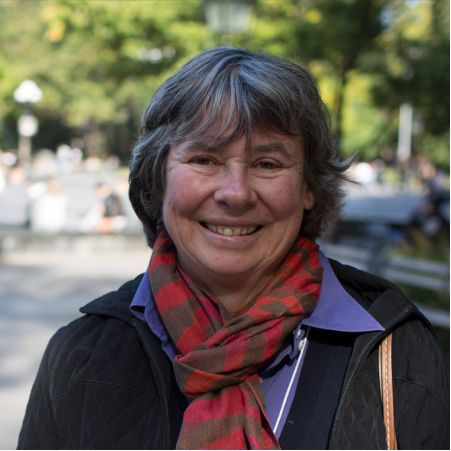We recently lost one of the best things to happen to NYC's streets in decades – thousands of outdoor dining sheds – in the name of excess government regulation and the preservation of car culture.
During the pandemic, around 13,000 outdoor dining areas were erected to save NYC's social life, local businesses, and 100,000 jobs during a very difficult time when indoor dining was unsafe. These dining sheds stuck around because most people loved and used them. At peak hours, most of them were full.
But now, because of a vocal minority mostly angry about how these sheds took space away from cars, and an overzealous government intent on micromanaging streets, the majority of these dining sheds are now about to be torn down. August 3rd was the deadline for restaurants and cafes to apply to the new Dining Out program which laid out a host of new rules they must follow. Only 3,000 agreed to do so. This isn't surprising considering the onerous and expensive new process, described here by Our Town NY:
"Outside of the various forms–taxes, insurance, pest control–that restaurant owners had to submit during the application process, they also had to pay various fees and ensure that the sheds fit certain measurements. An application fee of $1,050 was collected for each type of shed, with a total of $2,100 if restaurant owners were applying for both. There was also a $1,000 public hearing fee and security deposit fees: $1,500 for a sidewalk shed, and $2,500 for a roadway shed. The new application deadline similarly came with a host of regulations that dining sheds must now follow...Meanwhile, the sheds will have new designs."
Why is this shed cleansing happening? We believe it has to do with the way our government manages community places. Dining sheds were born during the pandemic when government restrictions were pulled back. This gave business owners freedom to set up outdoor dining areas in whatever form and style best fit their business, in response to the needs and wants of their customers and neighborhood context. It unleashed an amazing surge of creative improvisation that led to beautiful and charming creations which exceeded all expectation and which people flocked to on a regular basis. Through "reciprocal gestures" (where adjacent businesses get inspired by their neighbors' improvements to make their own similar changes) businesses engaged in a kind of friendly competition to make their offerings better and better, thus elevating the whole block, which benefited the entire community.
[photos of social hubs around dining sheds]
The new government rules now being imposed aim to strip the creativity and improvisation from this process in the name of control and appeasing a car culture which destroys everything in its path. These new rules ignore and disrespect the enormous effort, collaboration, care, and investment we have seen emerge in communities as a result of outdoor dining and the consequent social hubs that have filled our streets. Will the great community-led outcomes we've seen – where community members felt a strong sense of ownership and pride over their streets because of this creative, collaborative process – now be eradicated? It's looking that way and it is a tragic loss...
If we want to encourage neighborhood vibrancy by protecting community creations and investments, we need new models for maintaining, governing and supporting them.
Where Government Falls Short
Even when driven by good intentions, the approach of governments to addressing problems is too siloed, too inflexible and stifled by regulations and bureaucracy, and too disconnected from the wants and needs of the communities they affect.
What we need to do is realign our governments' efforts with our communities' needs. We need to reinvent government to not be structured around the fixed plans of siloed disciplines and professions but rather to be structured around outcomes – first asking the question of "what is the outcome we want in this community?" and then taking a more open-minded, holistic, and flexible approach to achieving it by working together with the people who will be most impacted.
What we have found is that the outcomes we seek, especially in regard to creating built environments that people thrive in and love, can be best achieved by engaging and empowering community members. Community-led improvisation is key, along with the kinds of partnerships with government where leaders hold more of a managing role than a controlling one. These are core tenets of Placemaking.
Why Placemaking?
Placemaking is a process where the community works together to shape their public places, often with support or resources from business owners, governments, and other relevant stakeholders. When the community is at the head of a project, it is much more likely to be successful, well-received, well-maintained, and better integrated into the fabric of the community. That's because community members know best what their community needs.
We have seen the power of Placemaking and community engagement in countless instances around the world with revitalized parks, sidewalks, streets, squares, and more. A short documentary recently came out about our work leading the Placemaking movement for the last 50 years, and last year we held a successful first Global Placemaking Summit in Mexico City to formulate the movement's next steps. Placemaking has proven to be immensely successful in creating the outcomes communities want and it will only keep growing in influence and impact. Leadership needs to recognize this.
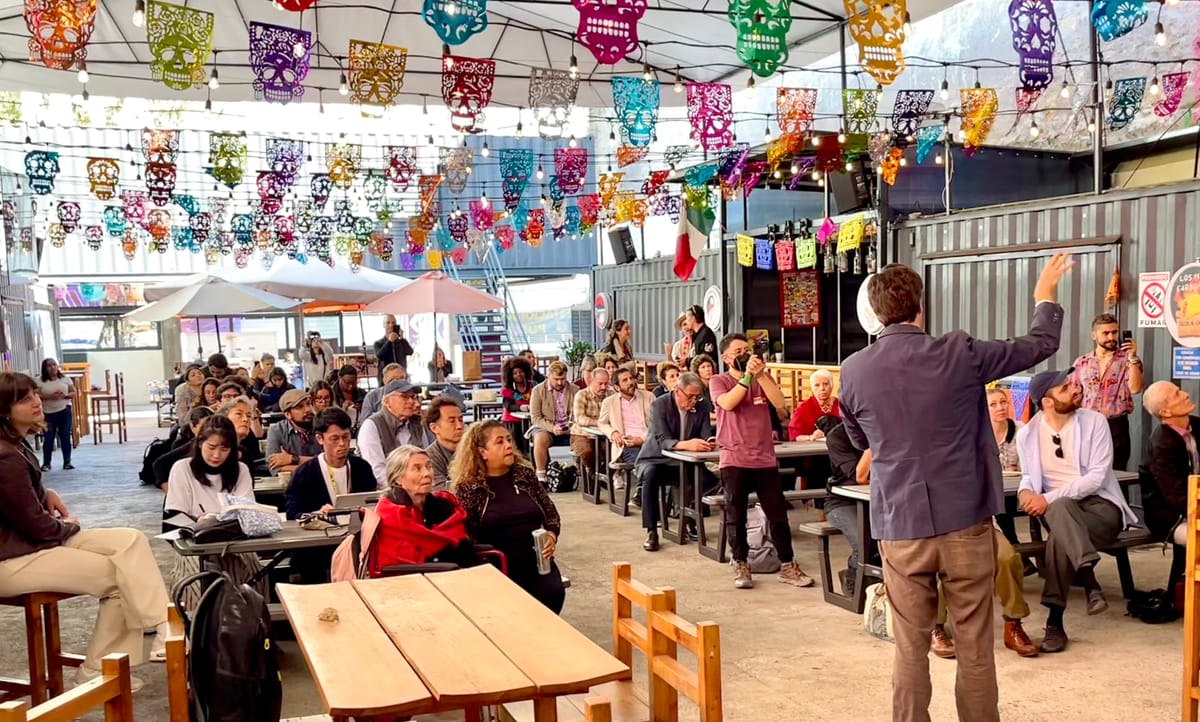
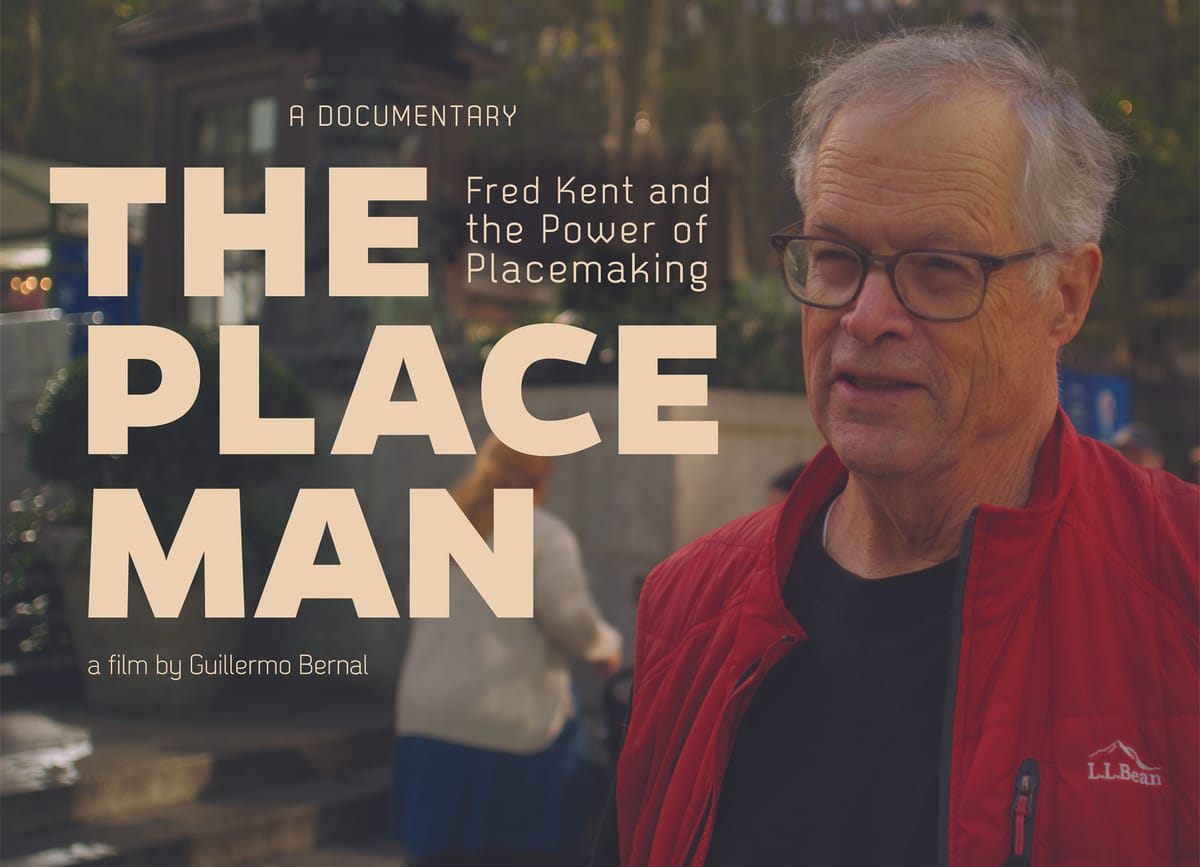
Placemaking in New York – Dining Sheds
Most recently in New York, Placemaking can be seen in the dining sheds. Business owners adapted these sheds according to customer feedback and neighborhood culture, creating places that resonated with the community and where people loved to gather and connect, even during the toughest of times. It was Placemaking at its finest.
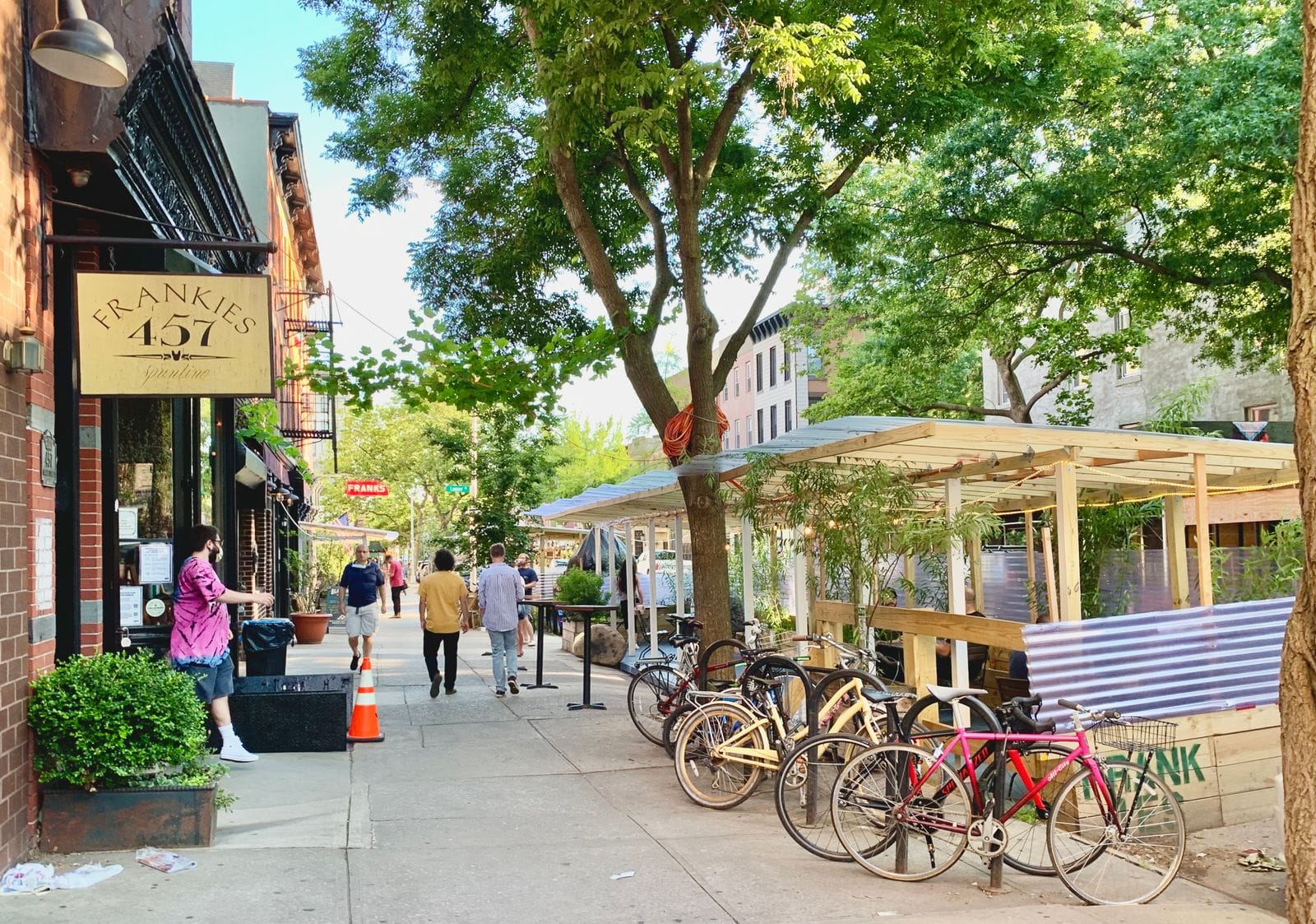
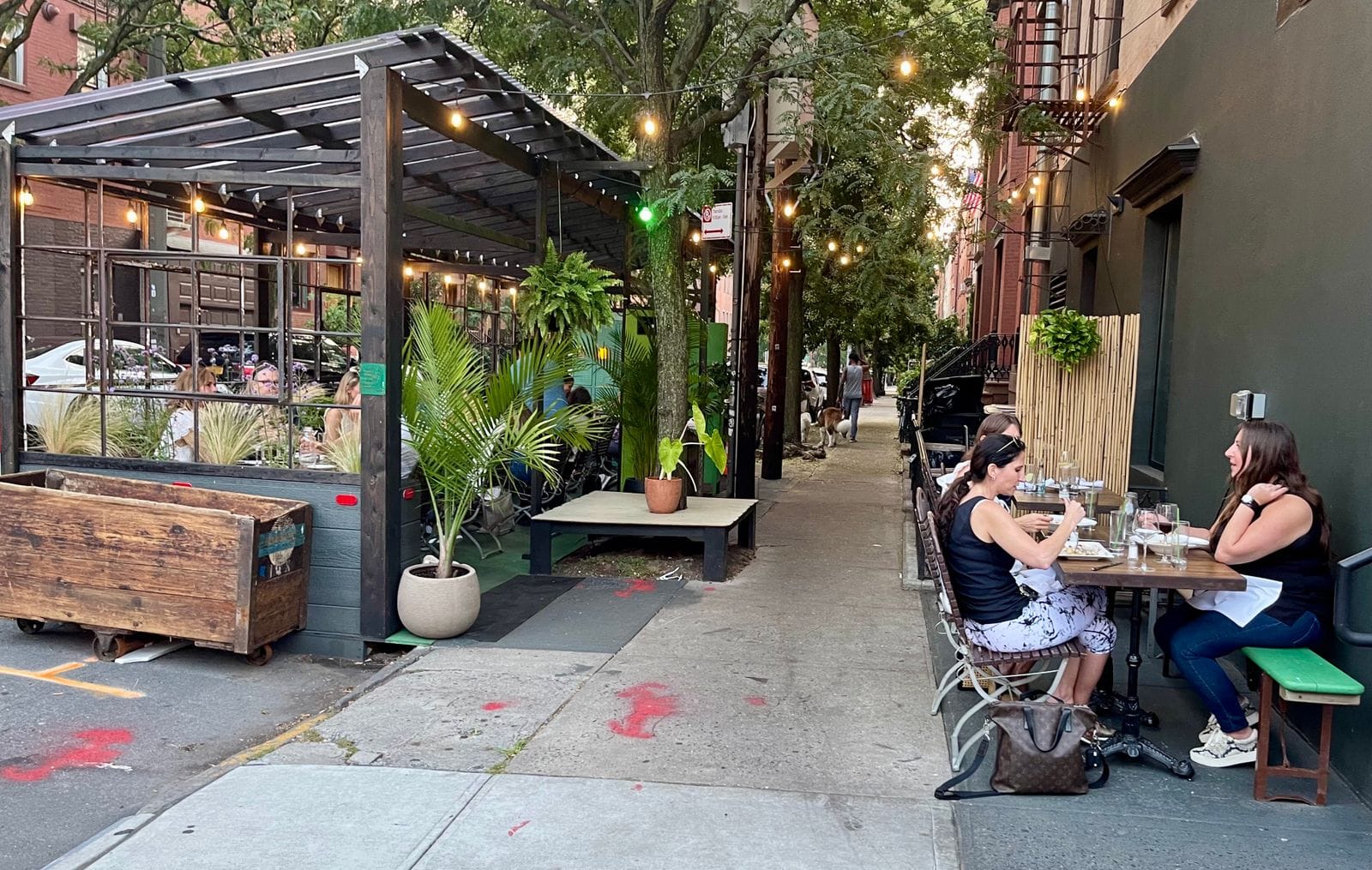
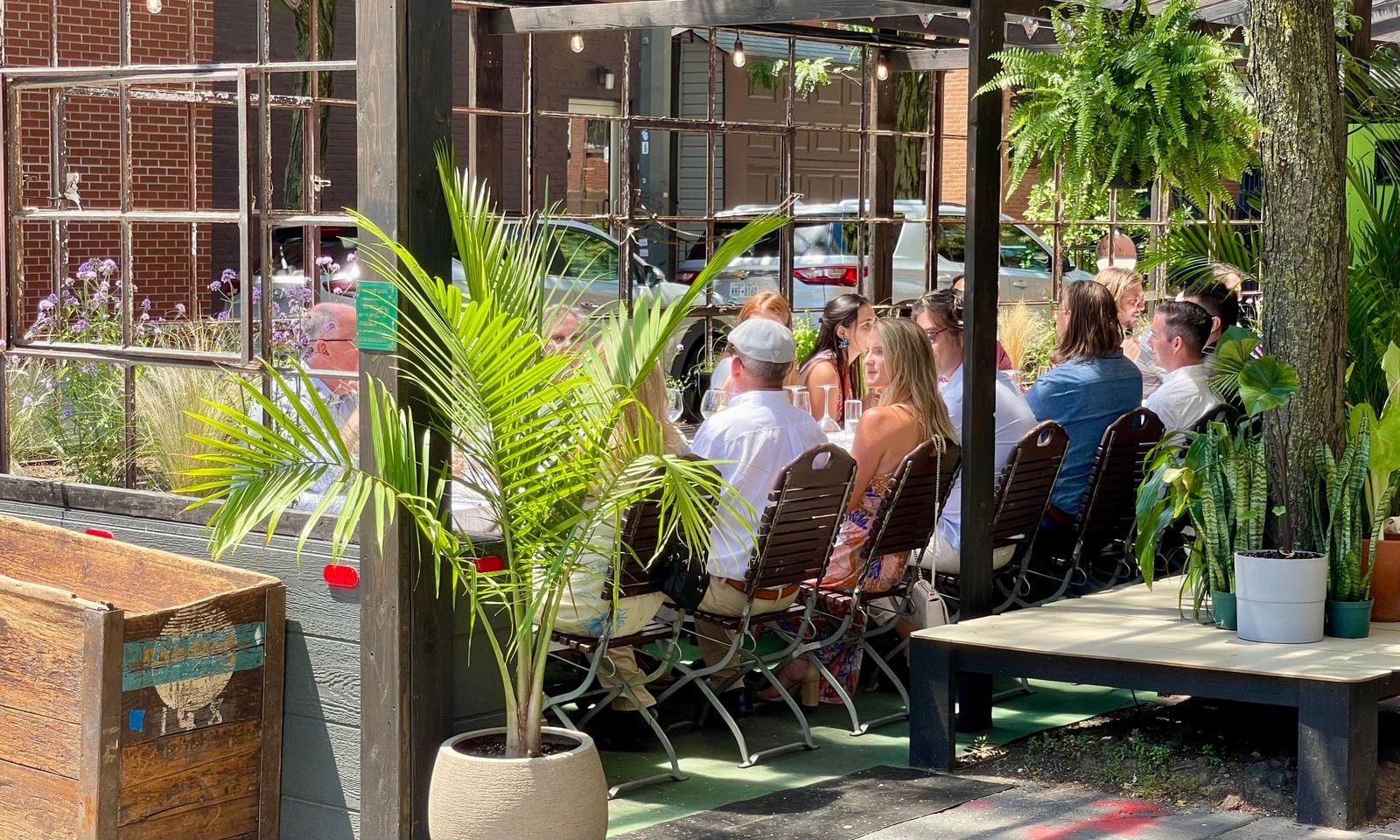
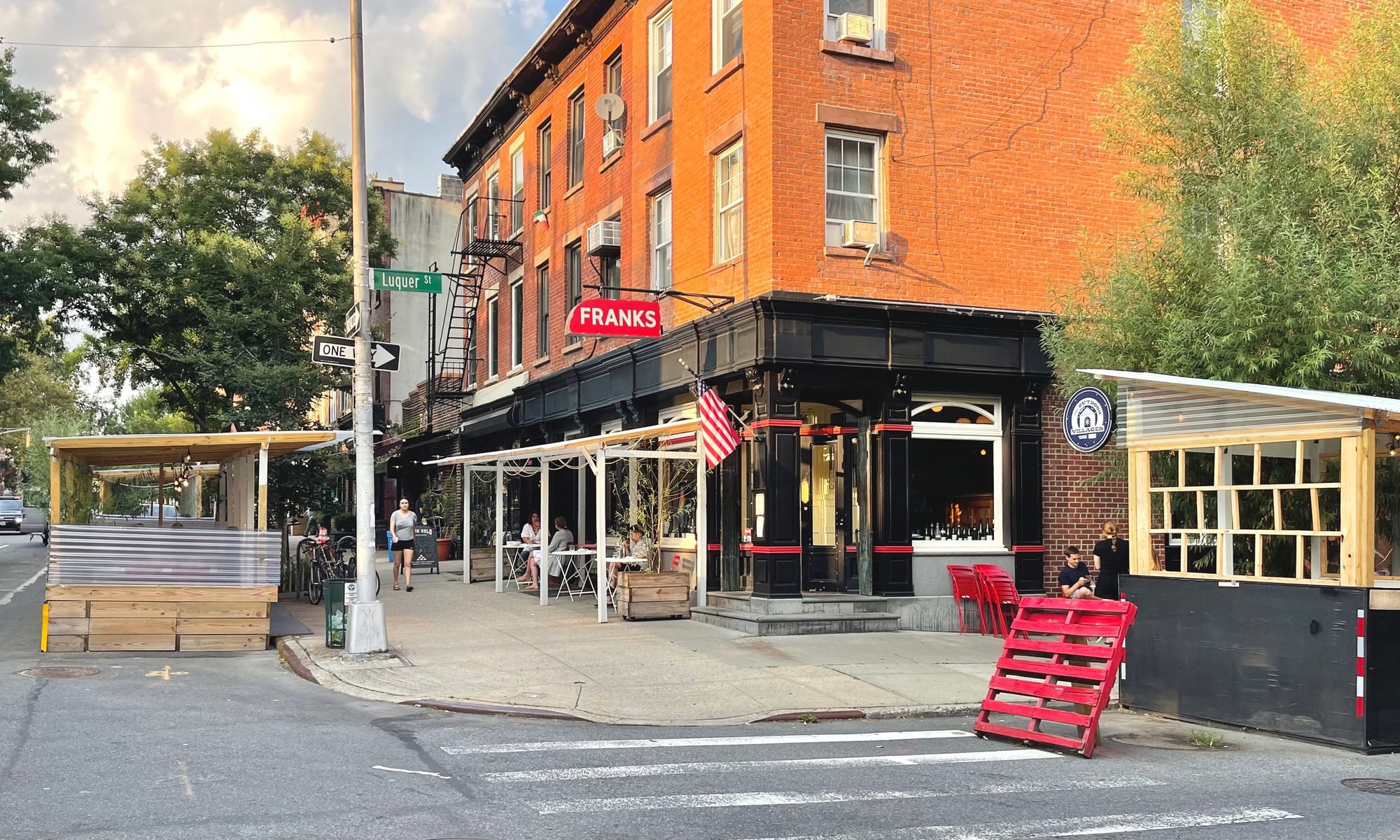
Now that the majority of sheds will be forcibly torn down, the remaining few removed for half the year and their once-unique designs standardized, we have to ask: Why have we taken a step forward only to take two steps back?

New York's outdoor dining sheds were integral to helping our communities heal from the pandemic and not only that, but they brought to life once dull and hostile streets. The streets of New York are too wide, too full of traffic, car exhaust, noise, stress, and chaos. It has gotten so bad that the city has been working on implementing a congestion tax to discourage driving in the heart of the city. While this would be a great step, why are we simultaneously making efforts to strip the little vibrancy New York streets have painstakingly built over the past 5 years?
What's more, it doesn't make sense. If the goal is to have 100,000 fewer cars in the city every day as the congestion pricing plan estimates, why not work to make better use of the significantly calmer streets? Let the cars go, but nurture the sidewalk life. Why backtrack when it took us so long to get here? In the wake of the tragedy Covid left behind, these newly vibrant sidewalks have been a rare positive outcome born from that difficult time, like flowers that sprout up from the ashes of a fire.
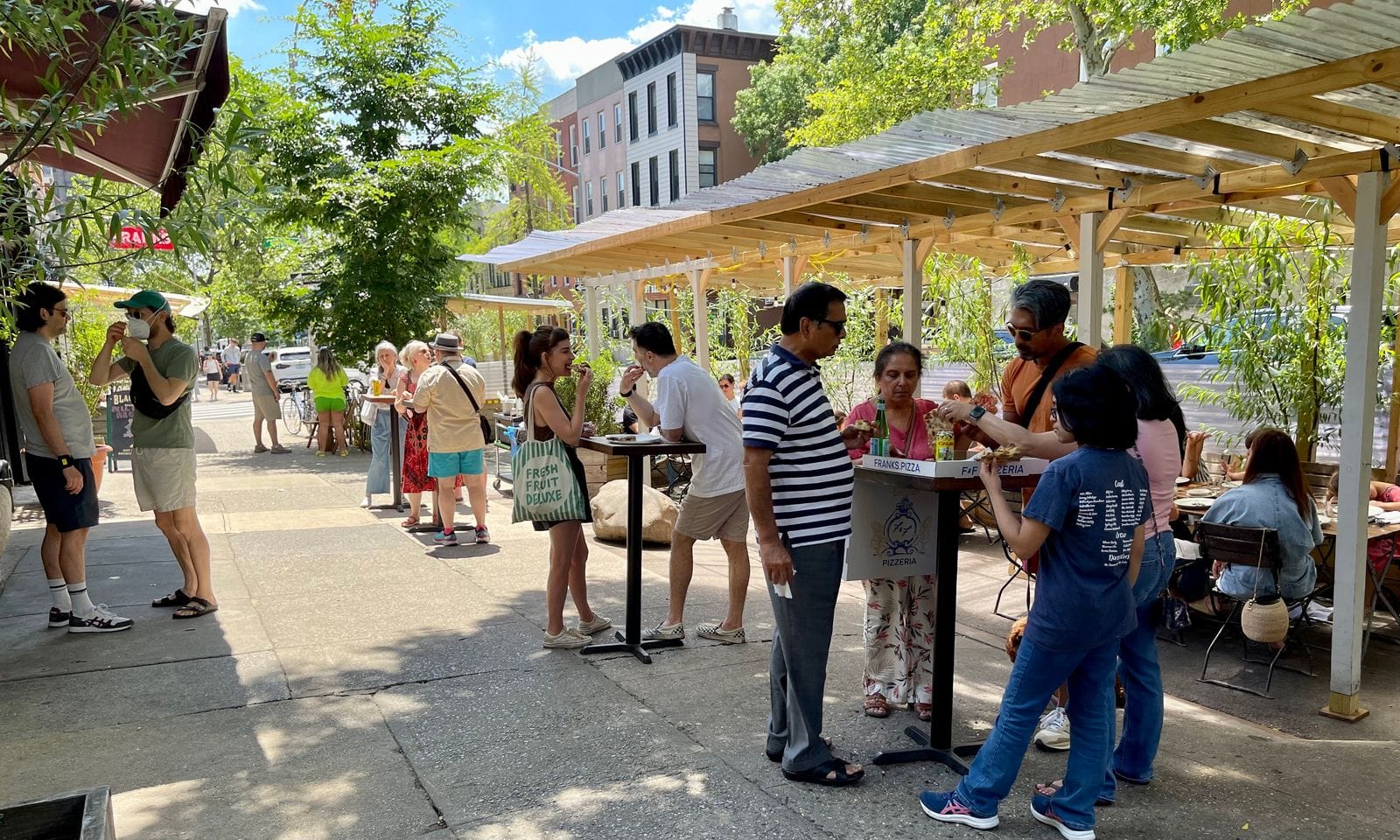
Turn everything upside down...to get it right side up...to go from inadequate to extraordinary
What has the traditional government-led design and planning of cities gotten us? It has gotten us countless overly wide, dangerous, hostile streets and narrow sidewalks where hardly anything happens, it has gotten us blocks with no character, dominated by generic big business storefronts, it has gotten us soulless public places characterized by concrete and boredom. In other words, it has all too often gotten us outcomes that we do not enjoy, that are not safe, pleasant, or comfortable, and that negatively impact our quality of life.
Naturally, if we want to achieve the opposite, we need to do the opposite. We should take government, big business, and siloed professions out from behind the wheel, and put in their place the people who best understand what their communities need to not only survive but to thrive – the people who live there.
The way to do that is by encouraging community-led improvisation. During our travels, the most magical and memorable moments of street life we have come across are where the street performers are and where the Placemaking is. We therefore say, "if architecture is frozen music and planning is composition, placemaking is improvisational street performance." It's not top-down fixed and planned approaches that make the magic happen, it's improvisation on the ground level. We need to center our future around local improvisation and reciprocal gestures to create dynamic environments where everyone can thrive. The sidewalks are a great place to start.
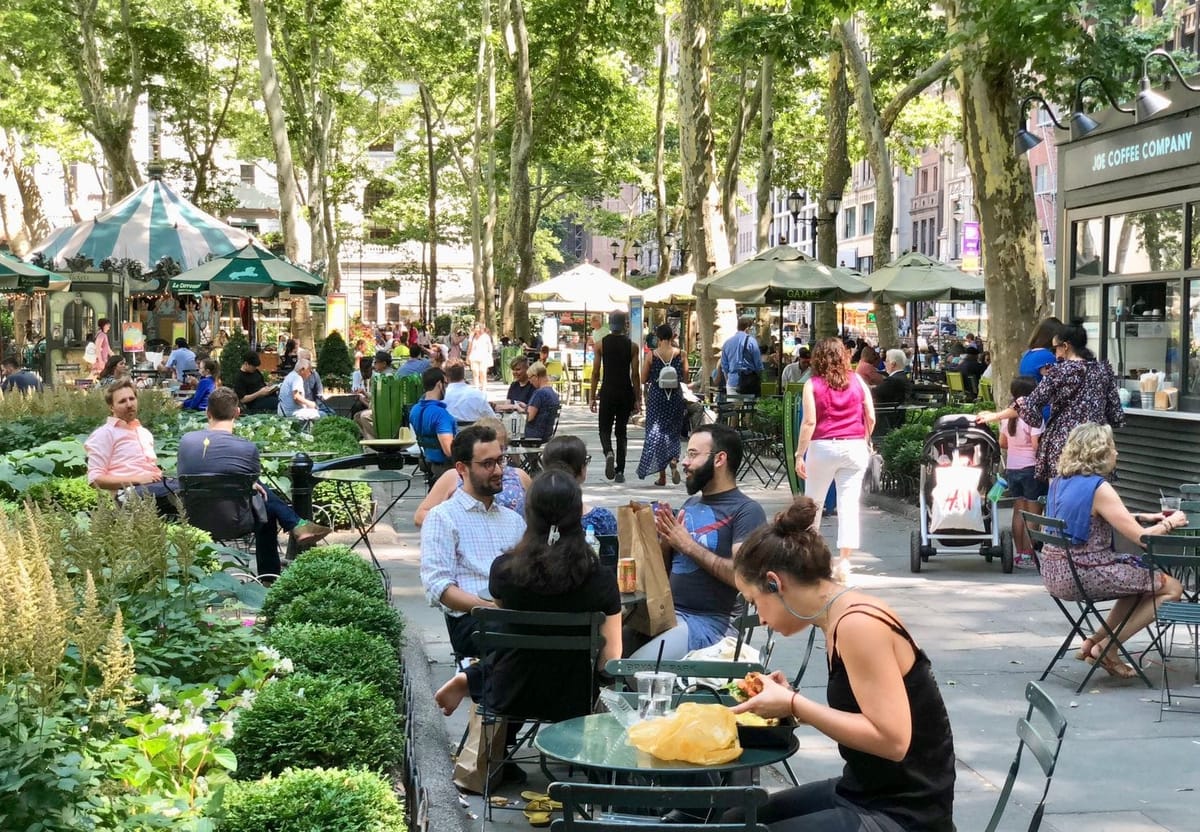
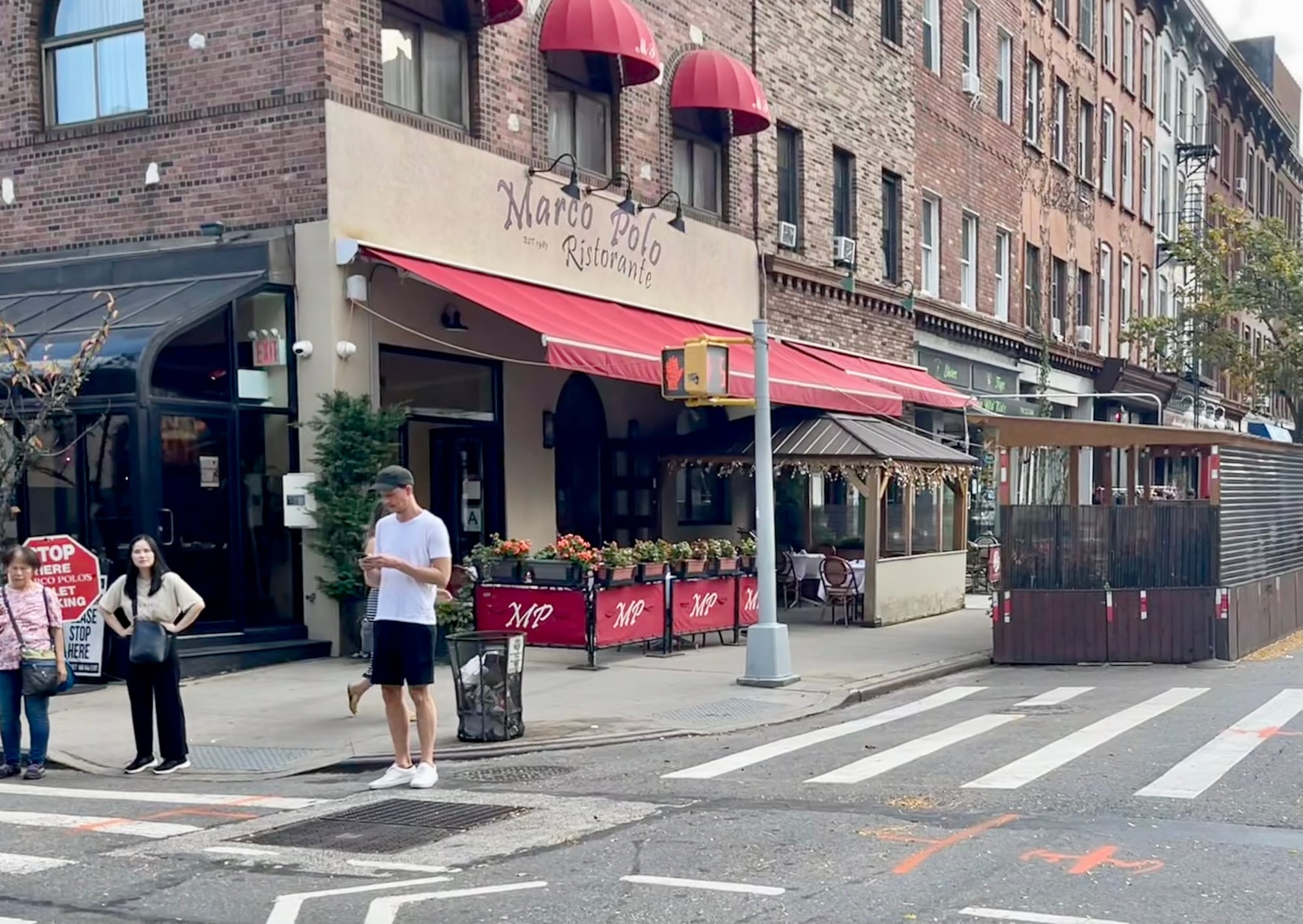
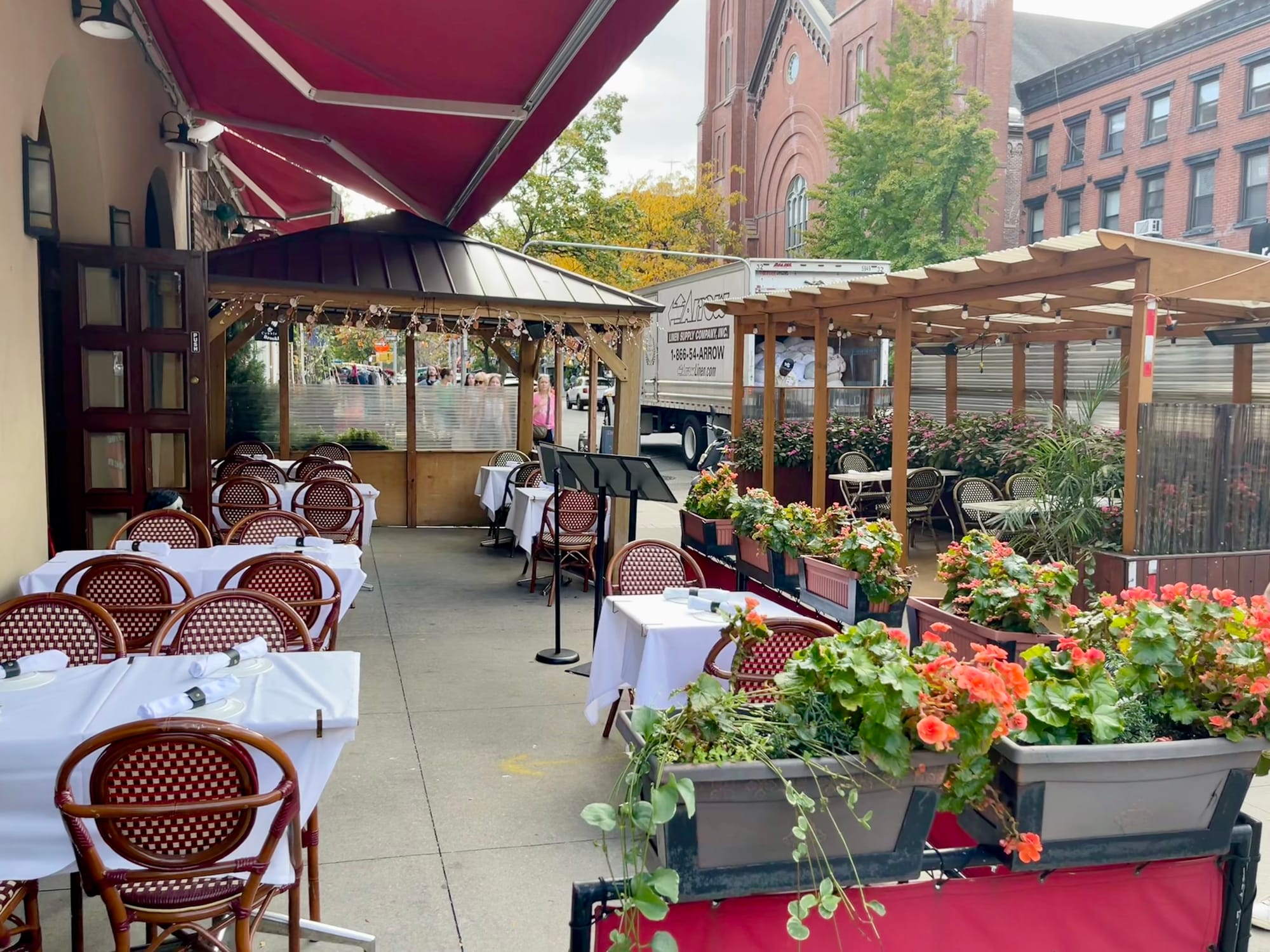
Marco Polo recent improvements create a strong destination os Court Street. It has joiners in giving an identity to Court Street that puts it on the list of best neighborhood streets in Brooklyn.
Sidewalks are the most important public spaces in the city
Sidewalks are the most important public spaces in any community, big and small. They are where social and commercial life takes place. The sidewalks are where chance encounters occur, where people are exposed to social life in their communities, where they experience many of the memories that they carry through their lives. People spend a significant part of every day on the sidewalks in and around where they live, work, hang out, pray, etc. or around the neighborhoods and attractions they explore.
Sidewalks are also the least understood and most overlooked public places and have always been the lowest priority in urban areas, despite the fact that they are the arteries for community and economic activity. There is no discipline that defines them, no agency that creates or supports them, even though the social life of humans is vitally important to society's functioning and requires a special and unique treatment.
After Covid, walking along the sidewalk became a very different experience from what it was before because of all the sidewalks cafes, outdoor displays of goods, and other gathering places which transformed walking into an interesting and enjoyable activity. The addition of social hubs brought so much new life to our communities that for many people they have become beloved and practically sacred places.
These places, where people linger and hang out on the sidewalk rather than briskly walk along it, are also where people become aware of the hostility of dangerous streets and intersections more. Overly wide intersections in the middle of our cities are where our neighbors are killed crossing the street (for example, on Atlantic Avenue, where we live). Sidewalks that are cracked or broken are dangerous to walk on, especially for the elderly. Sidewalks that are too narrow are where pedestrians are forced to be dangerously close to speeding cars. When we start to see the value of sidewalks we also start to see the issues that plague them more and more...
Whose Responsibility Are Sidewalks?
The natural follow-up question is – who is responsible for the social life of our sidewalks? The answer is no one. NYCDOT has taken up the dining shed issue because the sheds are located on streets, but historically the DOT's role has been to move as many cars as possible around at the expense of everything else that happens on the street. While the DOT is beginning to change and understand the importance of sidewalks – making more strides to activate them than it ever has before as times change and people better understand the essential role of good public places – it still does not make sense for them to be responsible for nurturing sidewalk life considering their priority is to serve the needs of drivers and traffic.
Alas, this priority is spelled out in the name of the organization itself – the Department of Transportation. It is not called the Department of Social Life. Perhaps we need a Department of Social Life. Humans are social beings and as such, social life is a vital component to maintaining a healthy and well-functioning society. Why then is no one responsible for creating opportunities for social connection in our cities? This lack of attention to social life has plunged the United States into an epidemic of loneliness, as recently announced by the Surgeon General himself, and there are numerous very serious associated health problems to this epidemic, including significantly higher risk of death and billions of dollars lost in productivity. We are in the midst of a crisis of disconnection, yet we continue to erase opportunities for connecting, especially in our most extensive public spaces – the sidewalks.
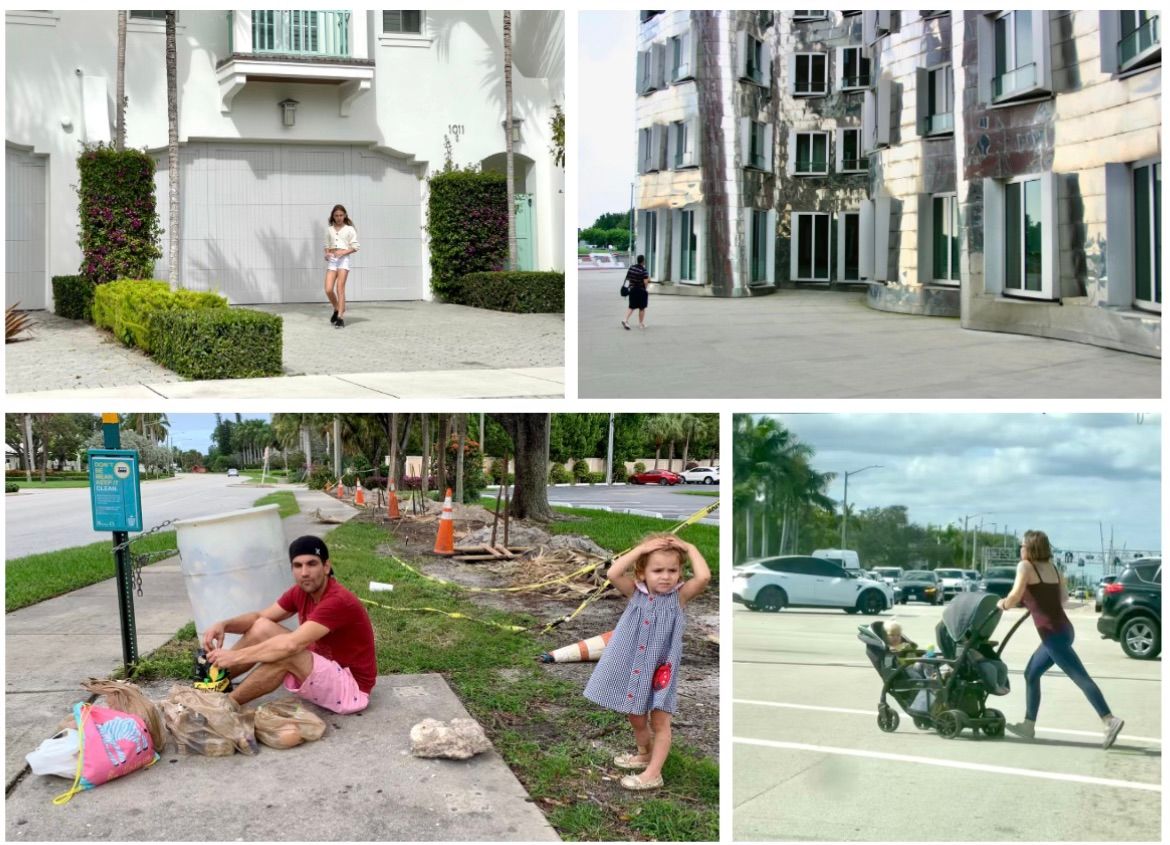
Somebody needs to be responsible for fixing this. An organization dedicated specifically to this cause is required, not one that has its main priority elsewhere. The World Health Organization has made important strides in the direction of addressing the epidemic of loneliness, setting up a global Commission on Social Connection to address this serious issue. Perhaps what we need is local chapters of this commission in all of our cities to implement key measures on the ground. At the very least, we need to recognize that social life is a matter of public health and deserves to be treated as such.
If it is not possible or feasible to set up an official organization focused on this topic, then the responsibility of nurturing social life needs to be given to the people. We in the Placemaking movement have been focusing on the issue of community-led governance over the last 40 years because we recognize that communities are the most capable in revitalizing public spaces. This is why, when sidewalk life suddenly became incredibly important during Covid, we got the amazing dining sheds and social hubs that we see in New York today – through community engagement, improvisation and Placemaking.
Case Study – Cobble Hill and Carroll Gardens
Cobble Hill and Carroll Gardens in Brooklyn offer a great story of a transformation from pre to post Covid. It is a story of extraordinary resilience and evolution that has been organic with no real plan or top down control from city government. It is a story of people collaborating under challenging circumstances in ways where mutual respect is evident, but the underlying force has been improvisation at its best.
It is an example of how, if people are left to their own devices, they can achieve outcomes greater than any planning, design or government agency can achieve. There is a need for some oversight and rules, yes, but by outlining them in collaboration with a community and with respect for their needs and values, the results can be places that experience a true renaissance and local community ownership.
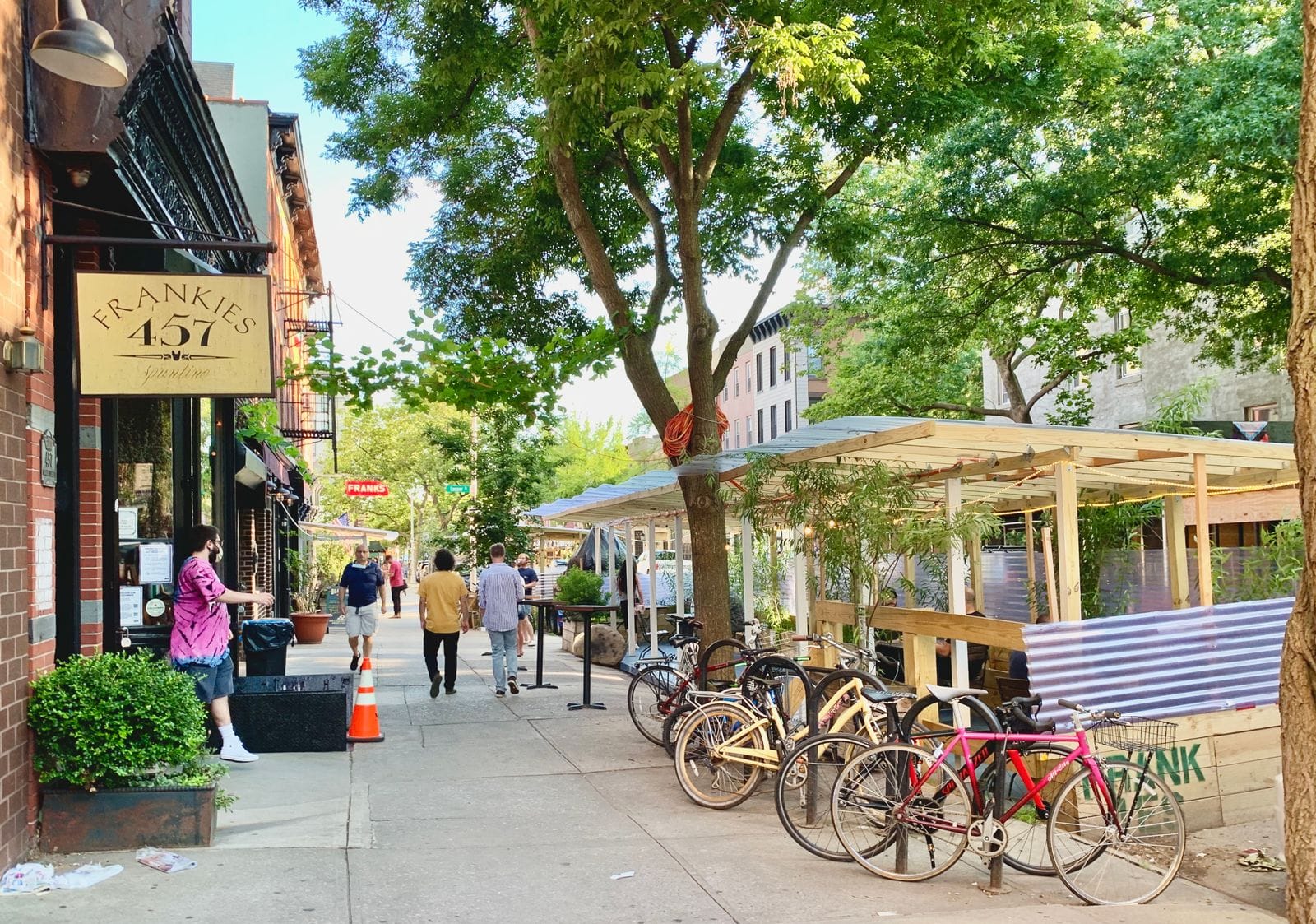
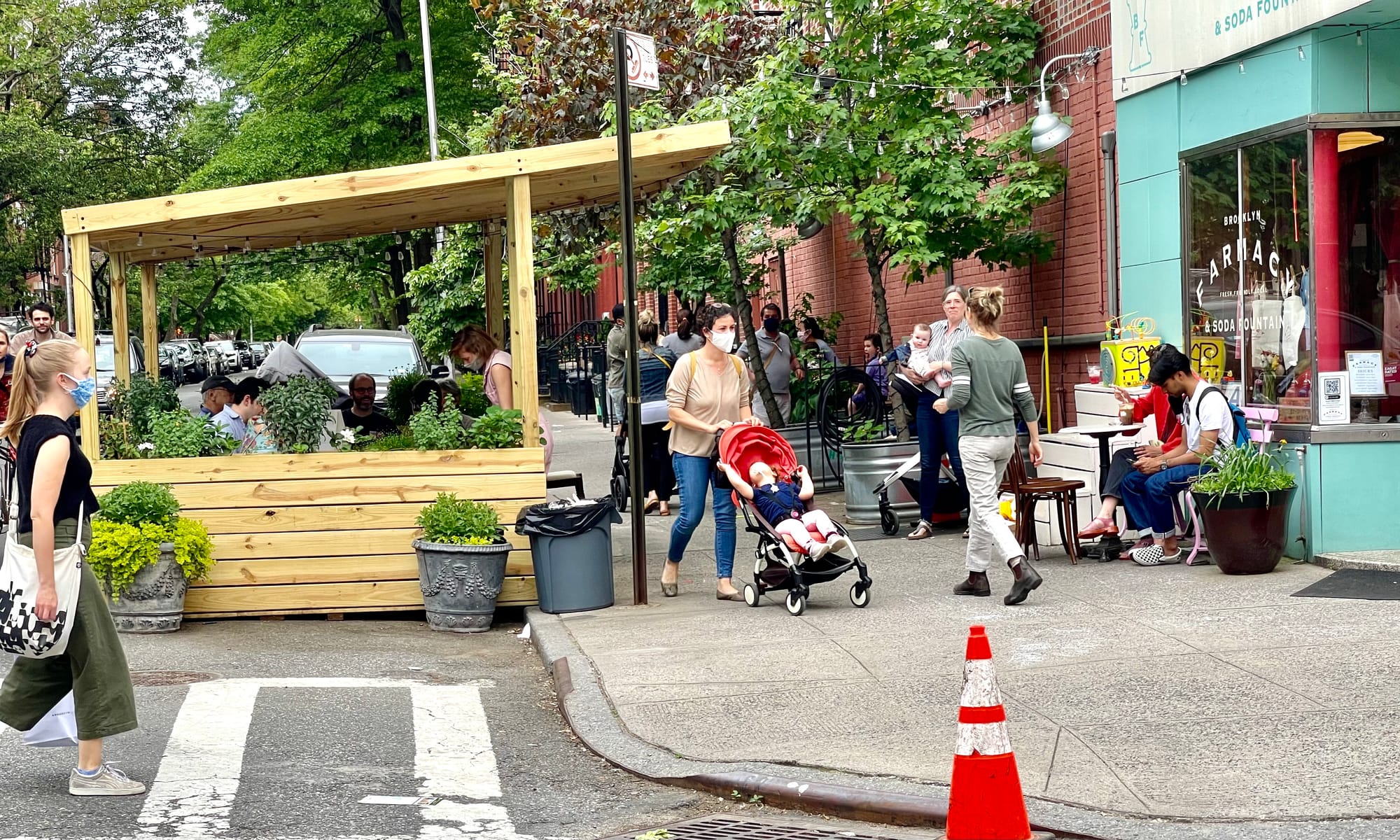
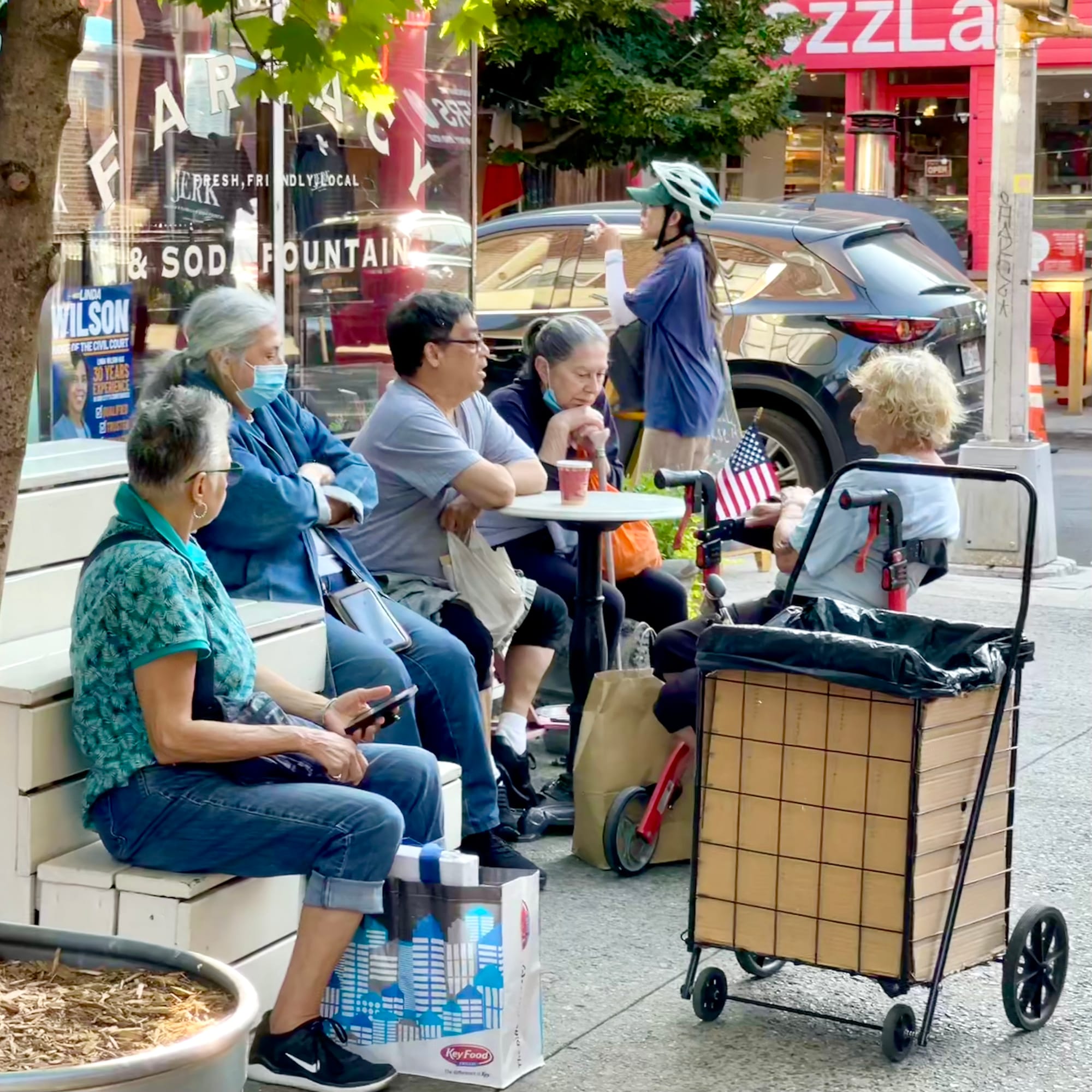
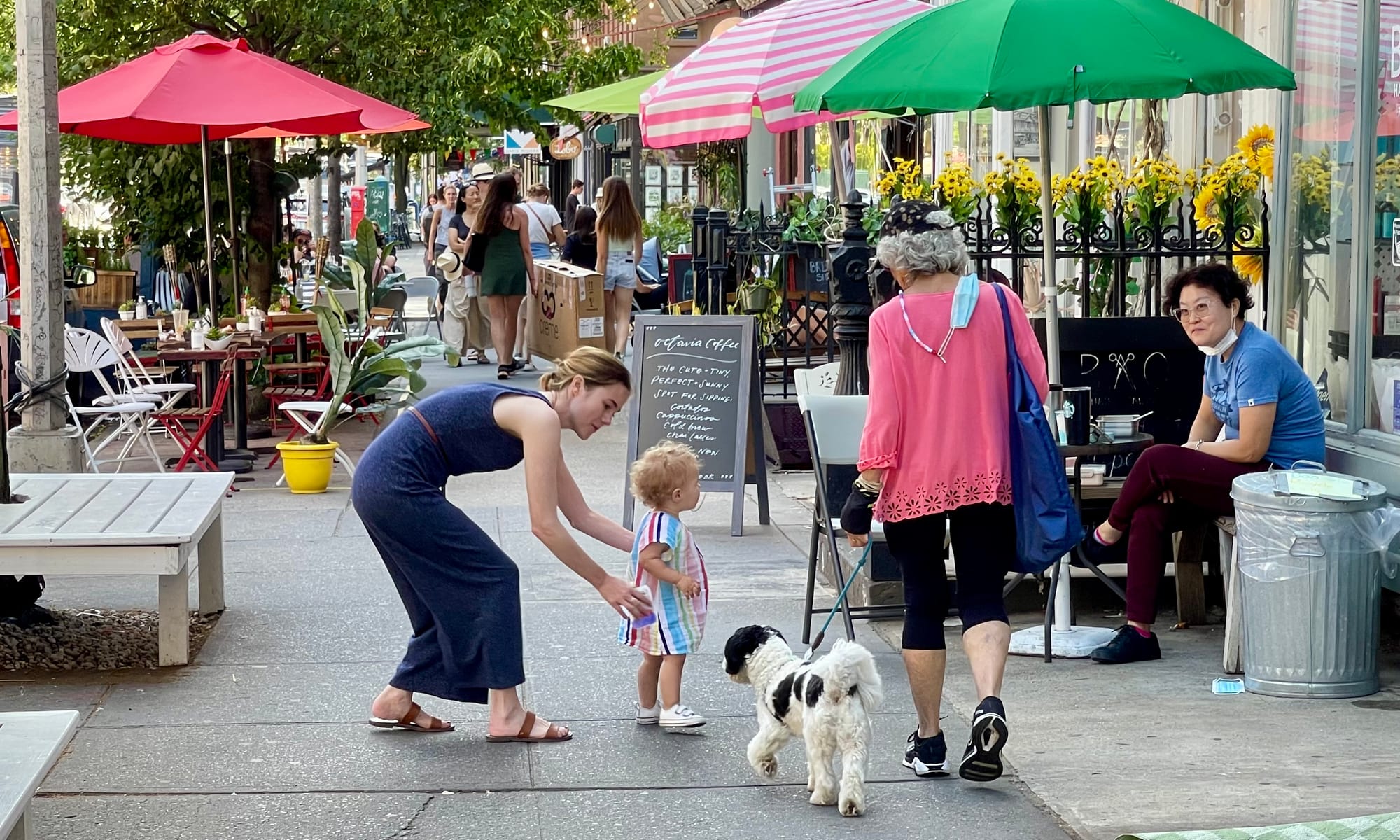
The limitations on indoor activity during Covid opened people up to a new way of experiencing their neighborhood and they enjoyed it so much that it stuck around. People were out on the sidewalks, strolling much more, promenading up and down each street. In fact, with this part of Brooklyn originally being an Italian neighborhood, the term "passeggiata" can be used to describe their behavior – an Italian term for the beloved activity of promenading.
Now that we are out of the darkness of lockdown, why must we throw the baby out with the bathwater? Covid opened us up to new way of doing things and we liked those ways. Instead of regressing to old patterns, we should evolve with what we've learned and build on it. Only in this way can our future be an improvement on our past.
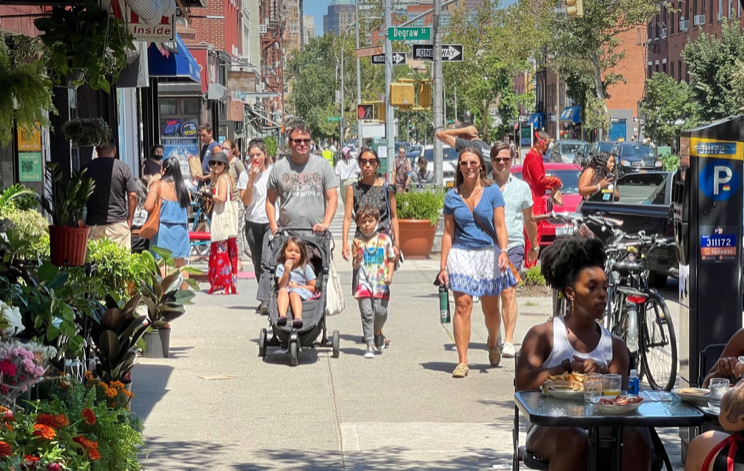
Making it Happen
The Main Obstacle - Car Culture
Car culture has infiltrated deep into our society and still influences almost everything in the design of every city, from the width and number of car lanes to the size of corners to how much valuable space we sacrifice for parking. Car culture has become a kind of giant Ponzi scheme where more car infrastructure is needed to support the existing car infrastructure in a never-ending cycle where communities lose on all fronts. We managed to move away from it with the great dining sheds developed post Covid...we almost made a dent in it with the congestion pricing that has been indefinitely postponed... Why do we keep backtracking? If we want to create thriving and enjoyable urban streets, not just shells of cities that cars can easily barrel through, we need to break free from car culture and the mentality that the car is king when it comes to the design of our streets.
Community-Led Governance
The community has proven they are more than capable of creating great places when they are given the freedom and support to do so. They know better than anyone what would serve their customers and their business objectives best. They have the most skin in the game and the most understanding of their context. It makes sense, then, to develop a system where we empower local business owners and community members to take up the task of shaping the public space, rather than taking it out of their control and putting it in the hands of committees and institutions that have no real connection to it.
When communities are given the power to create and maintain their surroundings, they even protect them better than outside actors can do. By sitting in the public realm and passively observing their beloved neighborhoods, community members put "eyes on the street" which make excess police monitoring unnecessary. Communities can self-create and self-manage, if given the opportunity and if empowered to do so.
Possible Campaigns
We need to find ways to create and maintain the streets we love...trading in the streets that top-down mandates and the transportation industry have imposed on us over the last 100 years for ones where we love, enjoy, and can thrive in. The core focus areas for this transformation should be:
1) Focus on sidewalk life
2) Transform "killer intersections" into "corners that connect"
3) Create "sacred" community places in every neighborhood like beloved social hubs
1) Focus on the sidewalk life
Currently, our streets are dominated by cars. Over the past 70 years, the transportation industry has been given practically free reign to shape streets in whatever way works best for traffic throughput with everything else demoted to a secondary consideration.
However, streets are the channels for social and commercial life. If they don't provide an environment where social life and business activity can thrive, they don't fulfill their essential purpose in our society and then our society suffers. To fix this, we need to turn our focus from the streets to the sidewalks and sidewalk life (as well as sidewalk extensions such as dining sheds).

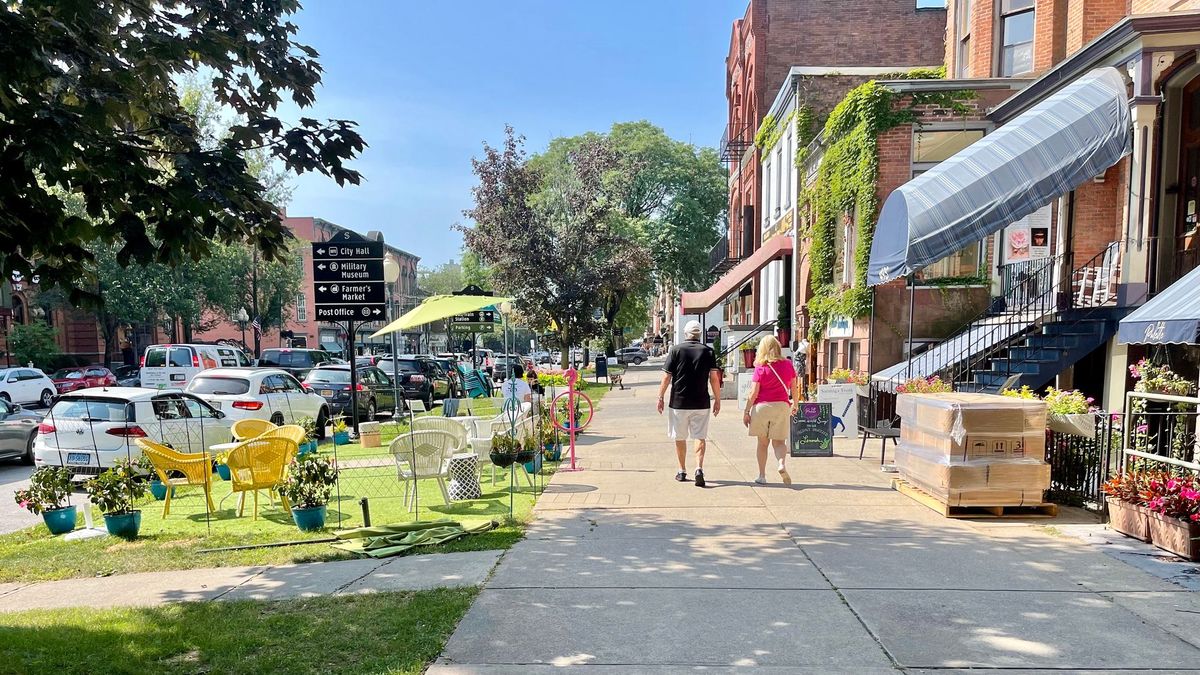
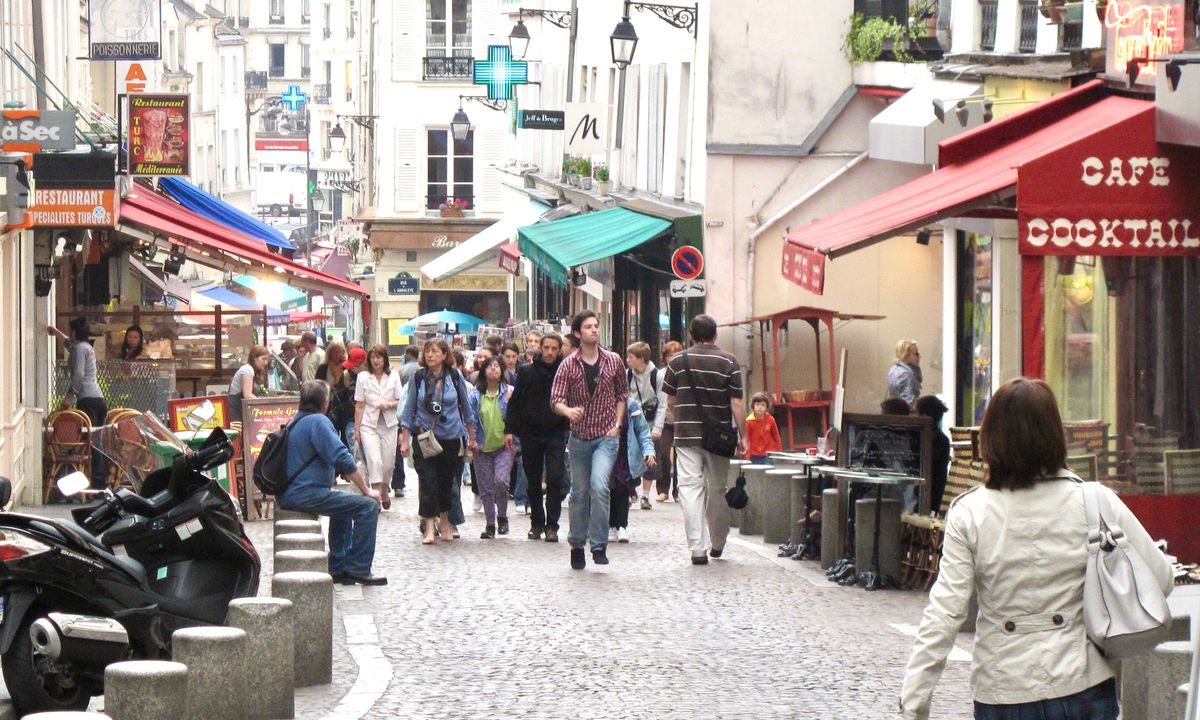
2) Transform "killer intersections" to "corners that connect"
Just as our streets are dominated by cars, so are our intersections. They have become so large and hostile that they're not only dangerous for pedestrians but also kill all the activity on the corners as people feel unsafe and uncomfortable lingering there. Because of this, we call them "killer intersections." However, corners are anchors in our communities – they are the places where we stop to cross the street, lingering together, and where our paths intersect with those of others. They are important components of our urban fabric and we need to take them back as places for people.
By expanding corners and giving the businesses there the power to shape them through inside out design, we can create environments that are welcoming to foot traffic, patrons, and outside dining. This would impact driver behavior as well since wider and more active sidewalks and intersections have a traffic calming effect.
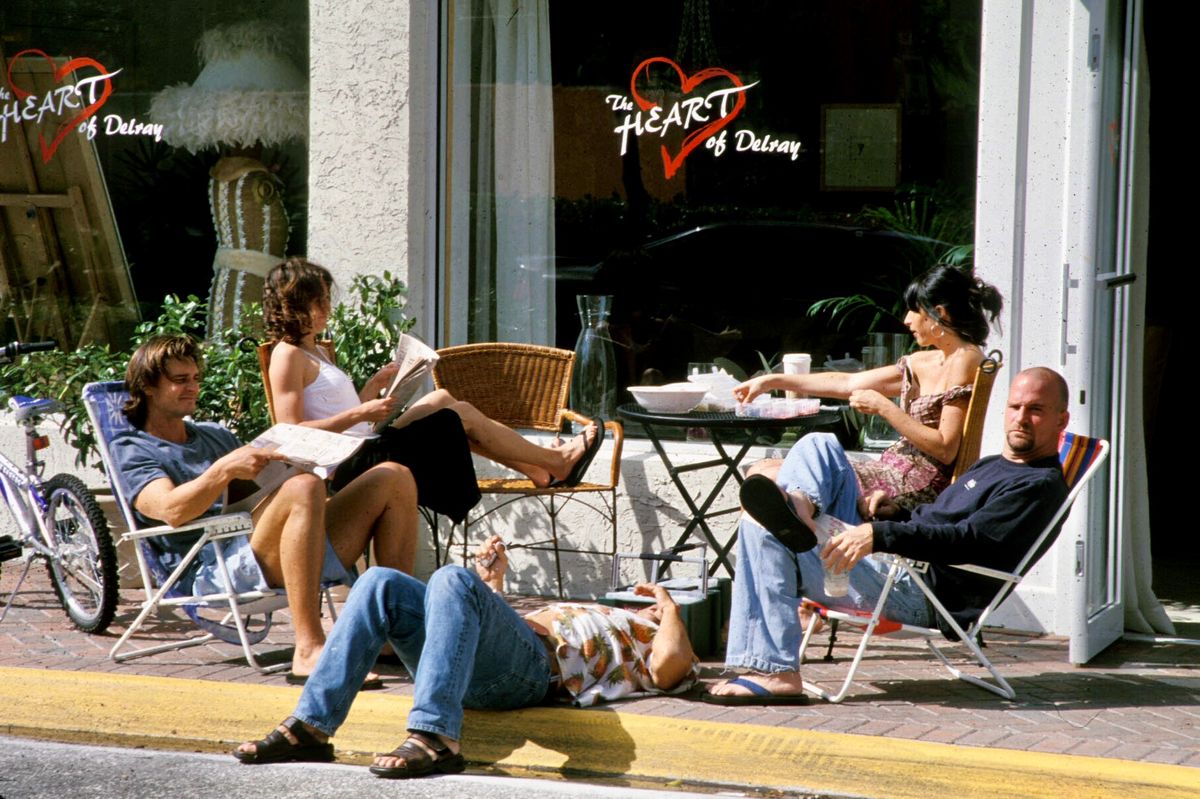
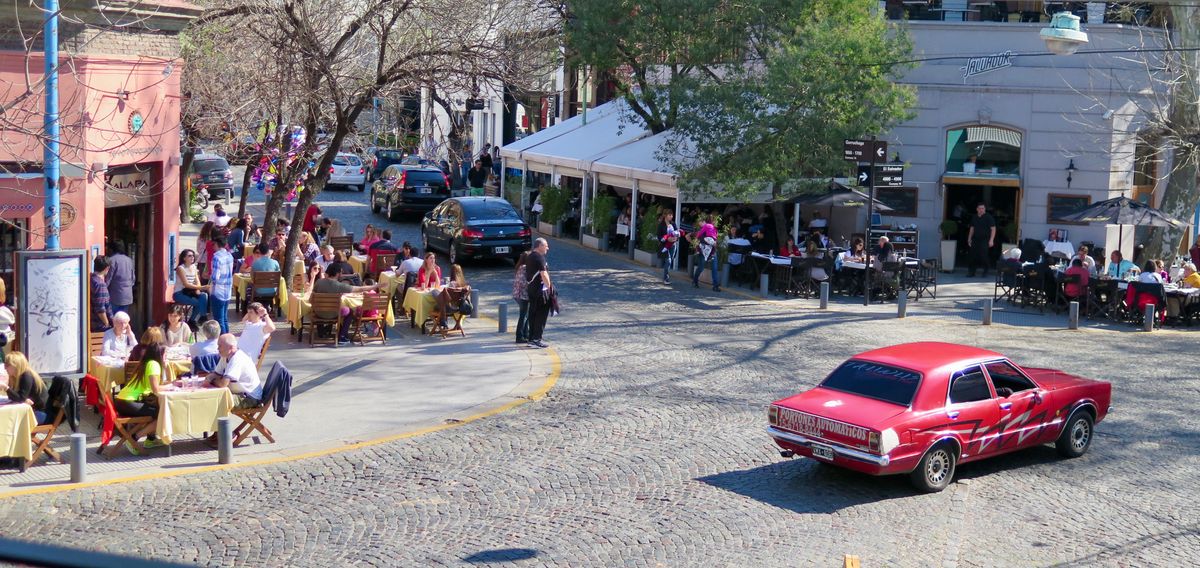
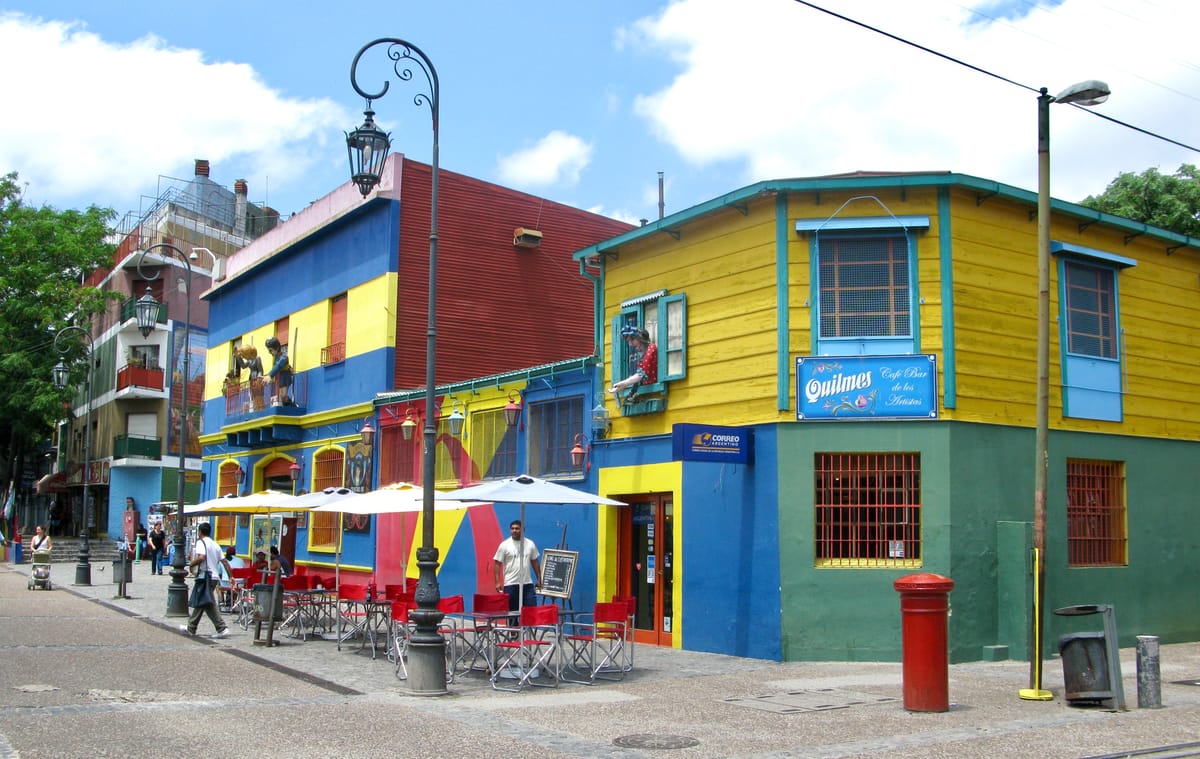
3) Create "sacred" community places in every neighborhood such as social hubs
Streets are channels that move us along and corners are important stops on the way. But the places we end up at are destinations. A thriving city needs not only vibrant channels via its sidewalk life but also treasured destinations that people love to visit and that practically hold a "sacred" place in the neighborhood and community life.
This can be achieved by the development of social hubs through the addition of amenities and assets to sidewalks, inside-out design, and more interesting public places like squares and gardens.
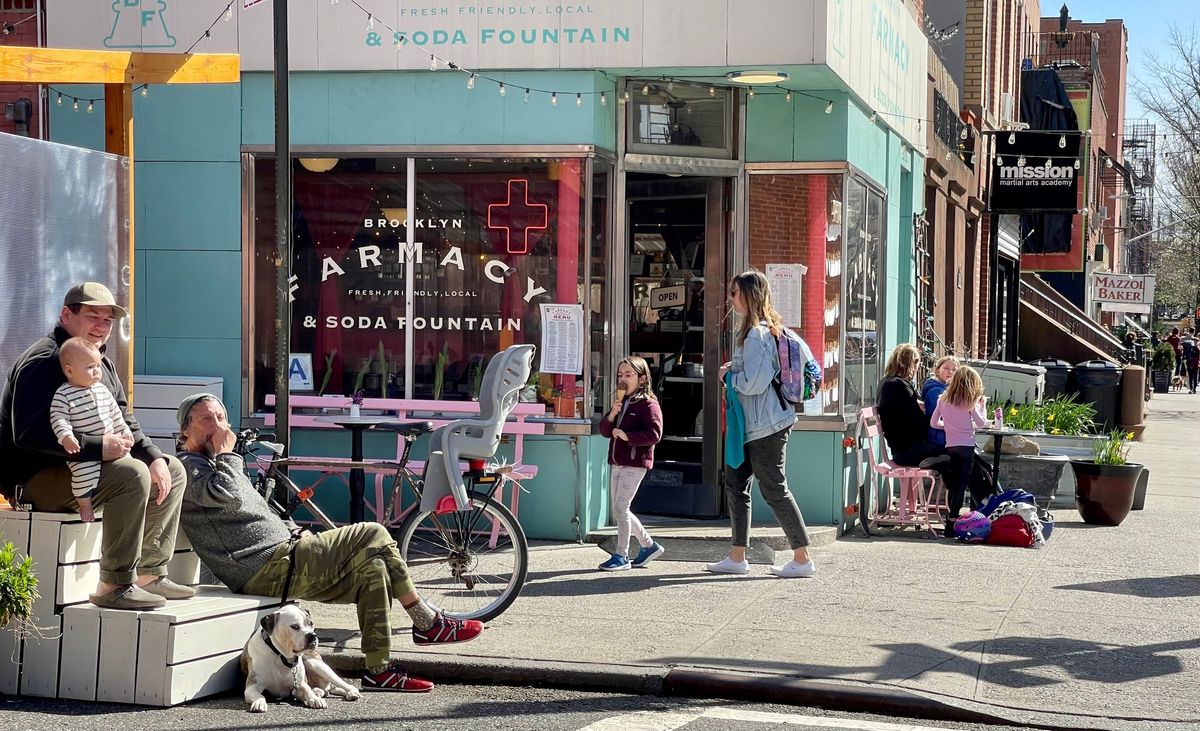
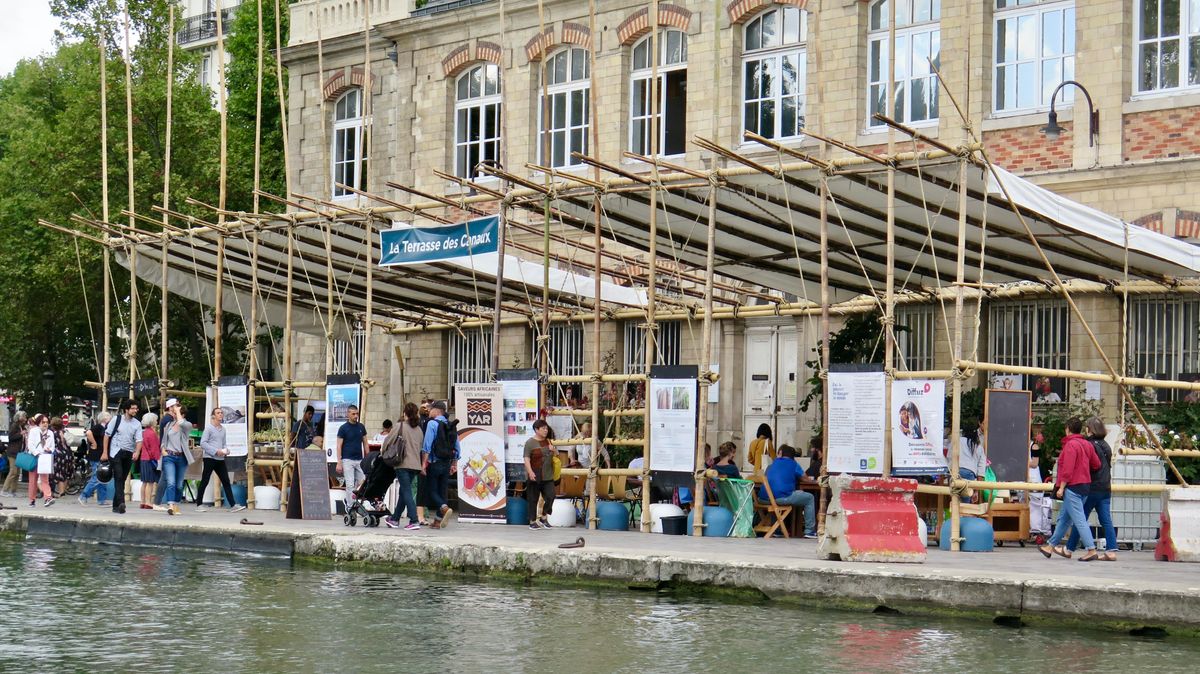
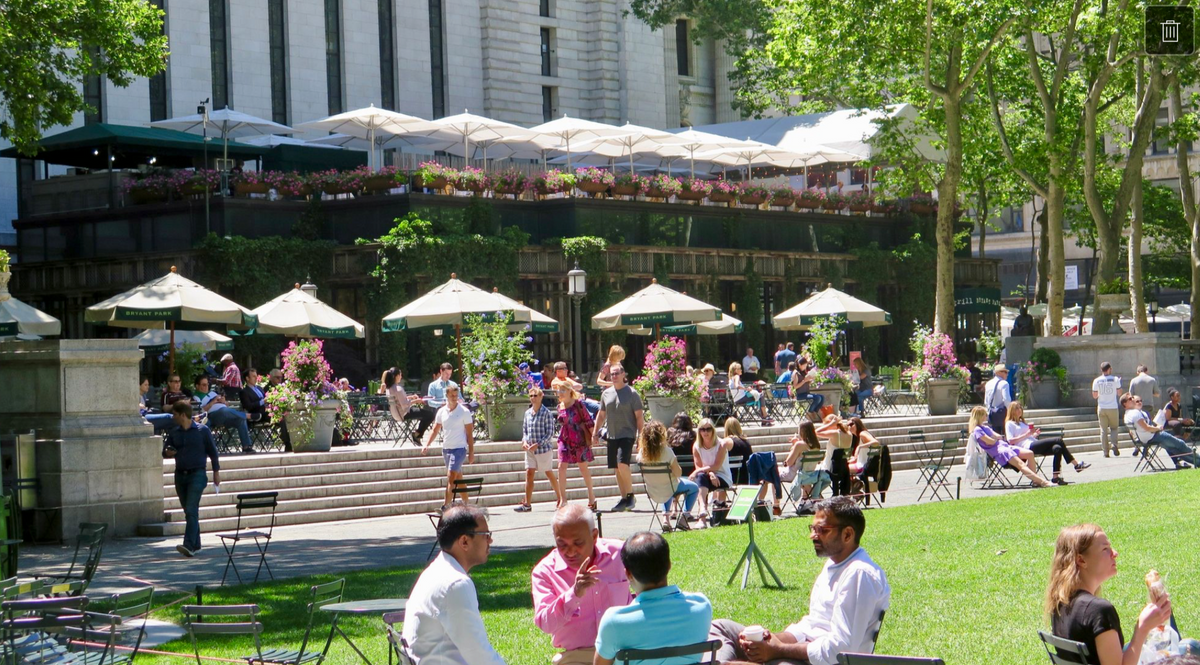
We need to redefine and reorganize agencies around the outcomes we want to see. With regard to the built environment, this means creating shared places that attract people and support social and commercial life. The best way we can support these outcomes is by transforming underutilized and underperforming public areas – sidewalks, corners, squares, markets, etc. – into dynamic settings for local commerce, social life, and community connection. We can do this by:
- Encouraging improvisation and reciprocal gestures by community members and business owners to create sacred, locally designed, unique social hubs
- Creating vibrant and interesting sidewalks that support all manner of social and commercial activity
- Creating kits of amenities that everyone can use to revitalize their places, especially locally created ones (ex: Street Lab)
What should the new role of NYCDOT be?
With this paradigm shift from car lanes to sidewalks, the role of the NYCDOT should also change. We recognize that they're trying to expand their priorities to include bettering sidewalks. In that case, they need to make fundamental changes not only to sidewalks but to streets because the two go hand in hand. Instead of trying to maximize vehicle throughput, the DOT should work on:
- Lane narrowing
- Street diets and sidewalk expansions
- Turn lane removals
- Creating safe intersections
Place Management – Six Campaigns for Neighborhood Renewal
Along with better managing the relationship between streets and sidewalks, cars and pedestrians, there also needs to be an intentional shaping of sidewalks with a focus on maximizing social and commercial activity. Some ways to do so are the following:
- Create double loaded sidewalks
- Bring the inside out
- Create wide sidewalks that support promenading and social activity
- Add amenities that include seating, shade structures, kiosks, etc.
- Create a business incubator zone or temporary displays to stimulate commercial activity
- Organize frequent programming at different times of day to support different user groups
The way for governments to truly help revive community, social, and economic life in neighborhoods is by taking a step back and letting communities take the lead. They know their neighborhoods best and are most invested in what happens on their streets. By supporting communities through the provision of resources and guidance when needed without the insistence of controlling and micro-managing every aspect of street life, governments can help revitalize urban life in a more natural and effective way than they have been doing up to now.


